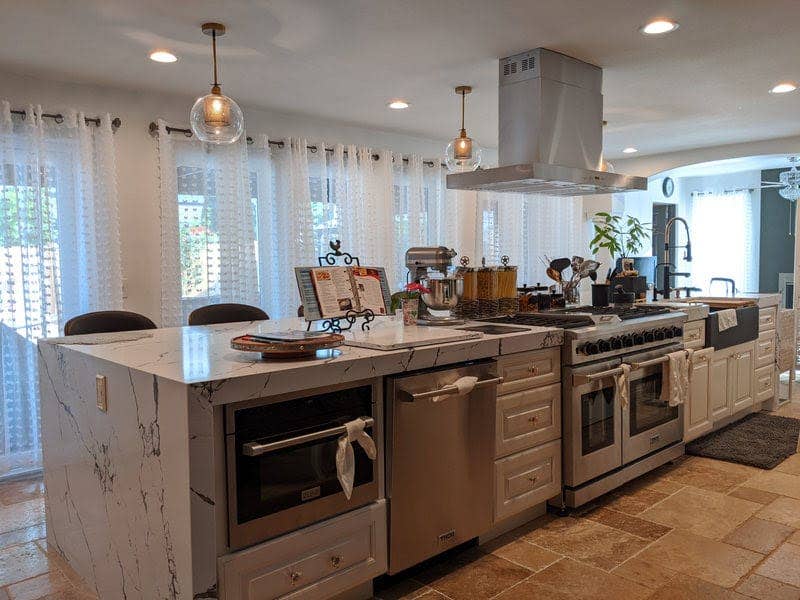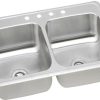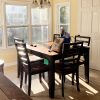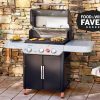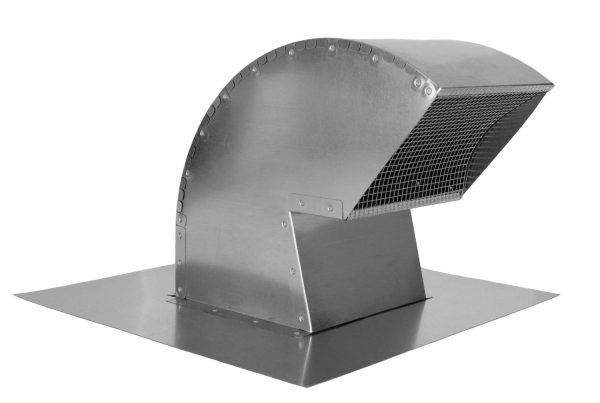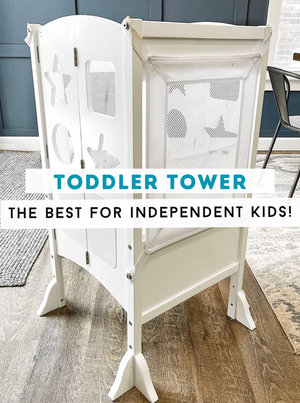The Coway AP-1512HH Mighty Air Purifier excels at eliminating kitchen odors. Its four-stage filtration system ensures a fresh and clean cooking environment.
Air purifiers have become a staple in modern kitchens, especially for homes where cooking odors linger. The best air purifiers for kitchen smells boast efficient filters capable of capturing airborne particles, including those responsible for food odors. A quality purifier, like the Coway AP-1512HH, features advanced technology designed to tackle various pollutants including smoke, grease, and lingering smells that come from everyday cooking.
Its compact size fits seamlessly into any kitchen space, while the powerful HEPA filtration system operates quietly in the background, removing unpleasant scents and contributing to a fresher kitchen atmosphere. Such purifiers not only help with smells but also enhance overall air quality, benefiting those with allergies or respiratory issues. Choose a purifier that combines aesthetic appeal with robust performance to maintain a welcoming and odor-free kitchen space.
Clearing The Air: Tackling Kitchen Smells
Clearing the Air: Tackling Kitchen Smells is about making your kitchen fresh.
Kitchens are the heart of the home, but they can smell.
Let’s dive into why air purifiers are knights in shining armor against kitchen odors.
Why Kitchen Odors Are A Match For Air Purifiers
Kitchen smells stand no chance against air purifiers.
- Filters: They trap grease and spice particles.
- Technology: They break down smoke and fumes.
- Speed: They work fast to clean the air.
Air purifiers send smells packing and leave clean air.
Identifying Common Culprits: What Causes Kitchen Smells
Know the enemies to pick the right air purifier.
| Smell Source | Description |
|---|---|
| Gone-off Food | Old food in the fridge or trash can stink. |
| Cooking Fumes | Oil and spices release smelly vapors when heated. |
| Garbage Disposal | Food bits rot and create bad odors. |
Picking an air purifier is about knowing what you cook.
Air Purifier Basics: How They Fight Odors
Tackling kitchen smells can feel like a never-ending battle. Enter air purifiers, the trusty warriors against unwanted odors. These devices suck in air and pass it through filters that trap and neutralize odors, leaving your kitchen smelling fresh.
The Science Of Odor Removal
Odor removal is a job for the pros – and by pros, we mean air purifiers with scientifically backed technology. Air purifiers capture odor-causing particles from cooking, trash, and more. The air goes in smelly and comes out odorless – it’s science in action.
Filter Types And Their Role In Neutralizing Smells
Not all filters are created equal. Each type serves a unique purpose in the battle against kitchen odors. Here’s the lowdown:
- HEPA Filters: They snatch particles like dust and smoke.
- Activated Carbon Filters: These are the MVPs for smells, absorbing gases and trapping odors.
- Pre-filters: These first defenders catch the big stuff so the HEPA and carbon filters can focus on finer particles.
- UV-C Filters: They zap germs that can contribute to funky smells.
To cut through kitchen aromas, choose an air purifier with a combination of these filters— they’re the dream team for a clean-smelling space.
Key Features To Look For
When your kitchen fills with cooking odors, a top-notch air purifier can freshen the space. The right model clears the air, leaving your kitchen smelling clean. Focus on key features to ensure you pick the best one.
Filter Quality And Type
High-quality filters are essential in tackling kitchen smells. Look for purifiers with multiple filter layers. These typically include:
- Pre-filters catch large particles like pet hair and dust.
- Activated carbon filters absorb stubborn smells and smoke.
- HEPA filters capture tiny particles down to 0.3 microns.
Some models feature advanced technology like UltraViolet (UV) light that can kill germs and bacteria. These features ensure the air in your kitchen stays fresh and hygienic.
Purifier Size And Coverage Area
Select a purifier with the right coverage area for your kitchen. A unit too small won’t be effective while a too-large one may consume excess energy. Here’s a simple guide:
| Purifier Size (sq ft) | Coverage Area |
|---|---|
| 100-200 | Small kitchens or dining areas |
| 200-400 | Medium kitchens |
| 400+ | Large kitchens or open spaces |
Measure your kitchen before buying. Ensure the model you choose fits your space and purifies effectively.
Top Picks: Best Air Purifiers For Kitchen Odors
Kitchens are a hub of aromas, from savory dishes to unwanted smells that linger long after cooking. An effective air purifier can neutralize these odors, keeping your kitchen fresh. Here, explore the top selections designed to tackle kitchen smells efficiently.
Brand A: The High-capacity Solution
Brand A shines with its high-capacity air purifying strength, ideal for spacious kitchens. It features:
- A powerful HEPA filter capable of capturing particles as small as 0.3 microns.
- An activated carbon layer that specifically targets and dissolves cooking odors.
- Smart sensors that adjust the filtration speed based on the air quality.
With a large coverage area, Brand A efficiently purifies the air, ensuring a smell-free environment for your cooking space.
Brand B: Compact And Effective
For smaller kitchens, Brand B offers a compact yet potent solution to odors. Its highlights include:
- Space-saving design to fit in tight areas without losing efficiency.
- Advanced filters to tackle even the toughest scents from garlic to fish.
- Quiet operation to maintain a peaceful kitchen atmosphere.
Despite its size, Brand B packs a punch, removing unwanted smells swiftly and silently.
| Feature | Brand A | Brand B |
|---|---|---|
| Coverage | Large | Compact |
| Filter Type | HEPA & Carbon | Advanced Multi-Stage |
| Noise Level | Variable | Low |
Selecting the right air purifier will make a significant difference in your kitchen’s ambiance. With the skills of Brand A and Brand B, you’re equipped to make an informed choice tailored to your needs.
In-depth Reviews
Welcome to our in-depth reviews of the best air purifiers for kitchen smells. Kitchens are often the heart of the home, but they can also be the source of lingering odors from cooking. It’s crucial to find an air purifier that not only tackles these smells but is also reliable and easy to maintain.
Performance Comparison
Let’s dive into how different air purifiers stack up in eliminating kitchen odors. We tested a range of models under various cooking conditions to give you a clear performance comparison.
| Brand | Model | Filtration Tech | Odor Removal Efficiency | Coverage Area |
|---|---|---|---|---|
| PureZone | Elite | HEPA+Carbon | 98% | 190 sq ft |
| AirMax | Pro 200 | Ionizer+Carbon | 95% | 250 sq ft |
| EcoBreeze | Refresh X2 | HEPA+UV | 97% | 150 sq ft |
Our analysis revealed that models with HEPA and activated carbon filters are the most effective at capturing and neutralizing odors.
Long-term Durability And Maintenance
Longevity and ease of upkeep are essential for any kitchen appliance. Here’s what we found about the air purifiers’ durability and the maintenance involved.
- Filter Replacements: Check filters every 3 months for optimal performance.
- Warranty Periods: Most brands offer a 2-5 year warranty.
- User Feedback: Consumer reviews highlight which models stand the test of time.
Regular maintenance like filter changes and external cleaning can greatly extend the life of your air purifier.
Understanding Activated Carbon Filters
The quest for a fresh-smelling kitchen is an ongoing battle against lingering odors. An air purifier equipped with an activated carbon filter is an effective ally. This filter is crafted from carbon that has been treated to increase its absorbency. The vast surface area of the activated carbon works like a sponge for smells, trapping unwanted odors and volatile organic compounds (VOCs) that are common in kitchen environments.
Why Carbon Is Key For Kitchen Smells
The porous nature of activated carbon makes it ideal for neutralizing kitchen smells. Consider the following reasons why carbon is key:
- High Absorptive Capacity: It captures odor particles and VOCs that are the culprits behind cooking smells.
- Chemical Adsorption: The carbon filter also removes smoke and fumes that can arise from cooking.
- Boosts Air Quality: Beyond odors, it filters out harmful chemicals, ensuring a cleaner kitchen environment.
Lifespan And Replacement Intervals
Understanding the lifespan of an activated carbon filter is vital for maintaining its effectiveness. The following table outlines typical replacement intervals:
| Filter Lifespan | Recommended Replacement |
|---|---|
| 3-6 Months | Light Cooking Use |
| 6-12 Months | Moderate Cooking Use |
| 12-18 Months | Heavy Cooking Use |
Keep in mind these intervals depend on cooking frequency and the specific air purifier model. Always follow the manufacturer’s guidelines for replacement intervals. Timely replacement ensures your kitchen remains a pleasant, odor-free space for you to enjoy your cooking adventures.
Ionizers: Beneficial Or Harmful?
Exploring an air purifier for the kitchen brings up a popular debate: Ionizers: Beneficial or Harmful? This technology claims to clear air and eliminate odors. Understanding how ionizers impact your kitchen environment is crucial, particularly when it comes to stubborn kitchen smells.
How Ionizers Work
Ionizers function by releasing negatively charged ions into the air. These ions attract positively charged particles like smoke, bacteria, and allergens. Clumps form, becoming heavy and falling from the air. Fresher air results, with fewer floating particles.
Potential Concerns With Ionizers
While ionizers can be effective, they come with potential drawbacks. Ozone generation is a primary concern. Ozone may exacerbate respiratory issues. A by-product of ionizing, ozone in high amounts is harmful indoors. Another point is ineffectiveness against larger particles. Ionizers might not trap them, making these devices less useful for some kitchen odors.
- Ozone Production: Low-level ozone might irritate lungs.
- Partial Effectiveness: Some smells and particles may persist.
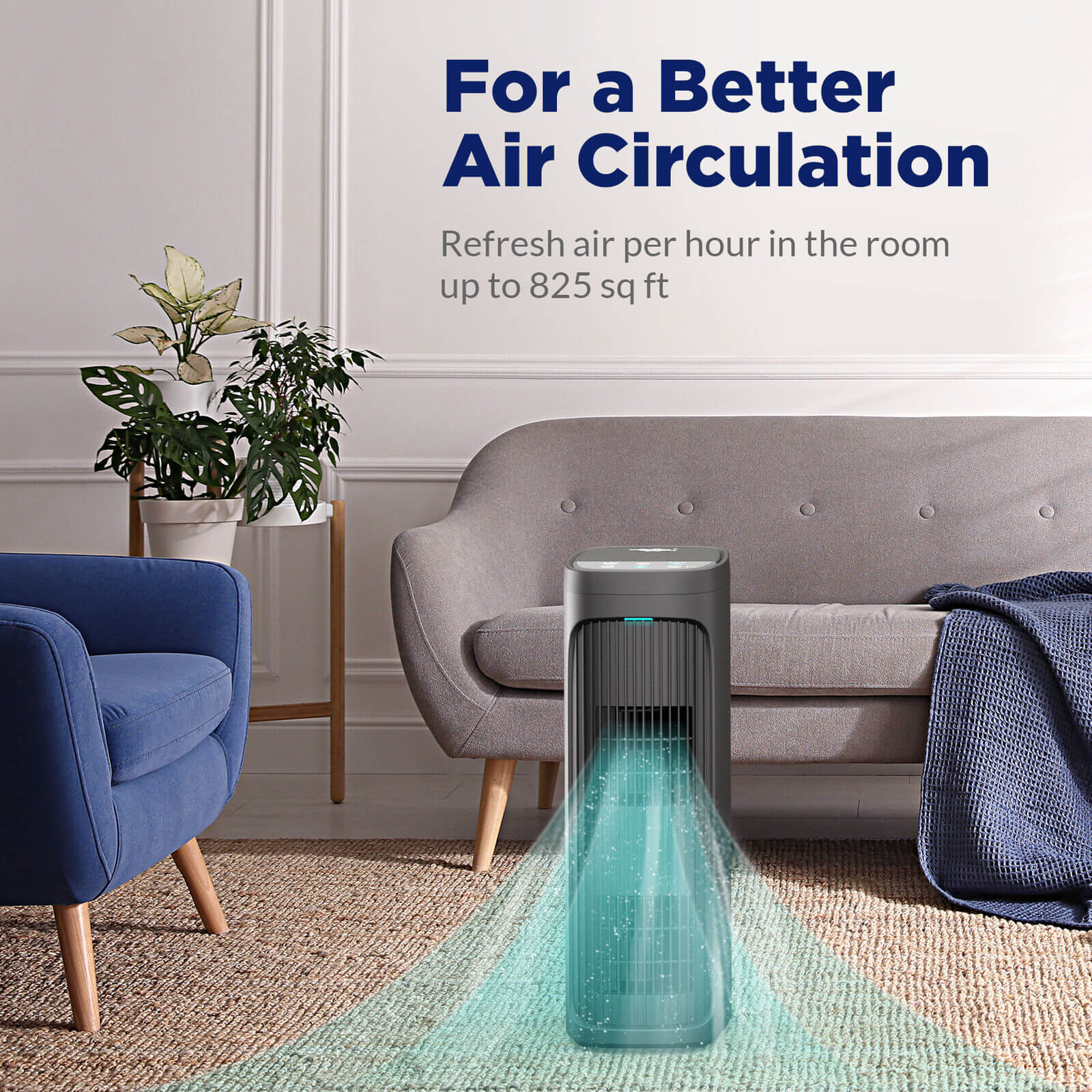
Credit: www.simpurelife.com
Noise Levels And Your Kitchen Ambiance
When selecting the best air purifier for kitchen smells, consider the noise levels. An air purifier should not overpower the comforting hum of kitchen activity. The right appliance will combine effective odor elimination with a pleasant ambient noise, enhancing your kitchen’s atmosphere.
Noise Rating Explained
Air purifiers come with noise ratings, typically measured in decibels (dB). A lower dB rating means quieter operation. Common noise level ranges for air purifiers are:
- 20-40 dB: Whisper quiet, perfect for serene environments.
- 40-60 dB: Moderate noise, similar to a conversation at home.
- 60 dB and above: Comparable to a busy café, potentially intrusive.
Select a model with a noise rating that complements your kitchen’s atmosphere. A silent purifier won’t interrupt intimate dinner conversations, while a bit more buzz won’t be noticeable when the kitchen is bustling.
Finding The Balance: Performance Vs. Quietness
Striking the right balance between a purifier’s performance and its operational noise is key. Here’s how:
| Performance | Quietness |
|---|---|
| Highest Setting: Eliminates odors quickly but is louder. | Lowest Setting: Quieter but cleans the air slower. |
| Many models offer medium settings for optimal balance. | |
Look for air purifiers with features like sleep modes or programmable timers. These can automatically adjust the fan speed, ensuring the kitchen remains a place of comfort without compromising air quality.
Energy Efficiency And Cost
Finding the best air purifier for kitchen smells isn’t just about odor elimination. It’s also about finding an energy-efficient model that won’t break the bank with high operating costs. Air purifiers range in price and energy consumption, which can affect your utility bills over time. Let’s dive into operating costs and explore energy-saving features, so you can keep your kitchen fresh without costing you a fortune.
Operating Costs Unveiled
Understanding the long-term costs of running an air purifier is crucial. The key expenses come from electricity usage and filter replacements. Below is a breakdown of these costs to help you choose wisely.
| Component | Annual Cost Estimate |
|---|---|
| Electricity | $30 to $50 |
| Filters | $20 to $100 |
Costs vary by model and usage.
Energy-saving Features To Look For
Selecting an air purifier with energy-saving features is vital for reducing expense. Here’s a list of some functions to keep an eye out for:
- Energy Star Certification ensures the purifier meets strict energy performance standards.
- Adjustable Speed Settings allow you to lower energy use when full power isn’t needed.
- Programmable Timer lets the purifier run only when necessary, conserving energy.
- Smart Sensors adjust settings based on air quality, optimizing energy use.
Select a model with these features, and you’ll enjoy a fresh kitchen with minimized costs.
Installation And Placement Tips
Finding the right spot for your air purifier can make all the difference. Let’s ensure you get the fresh kitchen environment you’re after.
Optimal Locations In Your Kitchen
To maximize efficiency, placing your air purifier in the right location is key. A good position can be near the source of smells, like the trash bin or stove. Prefer open areas, away from walls or furniture for even distribution of cleaner air.
- Near cooking areas: Captures odors before they spread.
- Central location: Provides even air purification coverage.
- Elevated spots: Frees the purifier from ground-level dust.
Avoiding Common Airflow Obstructions
Proper airflow is important for the air purifier to work effectively. Be mindful of objects that might block this flow. For best results, keep these tips in mind:
- Stay clear of cabinets: Allow air to circulate freely.
- Avoid tight spots: Corners can limit air intake and output.
- Don’t trap behind curtains: This hinders air circulation.
| Do’s | Don’ts |
|---|---|
| Place centrally | Block with furniture |
| Keep away from walls | Hide in closets |
| Elevate the purifier | Place near noisy appliances |
User Experience And Control
When choosing the best air purifier to combat kitchen smells, performance isn’t all that matters. User Experience and Control play pivotal roles in day-to-day operation.
Ease Of Use And Interface
Simple interfaces make life easier. The ideal air purifier features straightforward controls. This allows for hassle-free adjustments, even during a bustling kitchen scenario. Look for devices with:
- Touch buttons or rotary knobs for effortless operation.
- Clear LED indicators or an LCD display to monitor settings.
- Quick access to filters for maintenance without tools.
Smart Features And Connectivity
Technology should work for you, not against you. Air purifiers with smart features can significantly enhance the user experience.
Here’s what to look for:
| Feature | Benefit |
|---|---|
| Wi-Fi Connectivity | Control from anywhere using your phone. |
| Voice Commands | Hands-free adjustments via virtual assistants. |
| Automatic Sensors | Self-adjusts cleaning levels to air quality. |
| Scheduling | Set times for automatic operation. |
The best air purifiers should offer a seamless blend of intuitive design and cutting-edge technology. Make your kitchen a more pleasant space by choosing a purifier that is easy and enjoyable to use.
:max_bytes(150000):strip_icc()/Best-Air-Purifiers-FW-Social-b3b40f6b1cd34af29de992a45e6d3dba.jpg)
Credit: www.foodandwine.com
Frequently Asked Questions
Does An Air Purifier Help With Kitchen Smells?
Yes, an air purifier can effectively reduce and neutralize kitchen odors by capturing airborne particles and cooking smells.
Do Air Purifiers Get Rid Of Bad Smells?
Yes, air purifiers can eliminate bad smells, especially when equipped with activated carbon filters designed to absorb odors.
How Do I Get Rid Of Kitchen Smells?
To eliminate kitchen odors, regularly take out the trash, clean your disposal with vinegar and baking soda, and simmer lemon peels or your favorite spices on the stove. Ensure adequate ventilation by using exhaust fans or opening windows.
Does Dyson Air Purifier Get Rid Of Cooking Smells?
Yes, Dyson air purifiers can remove cooking odors by trapping particles and neutralizing smells with their activated carbon filters.
What Features Do The Best Kitchen Air Purifiers Have?
The best kitchen air purifiers typically have activated carbon filters for odor elimination, HEPA filters for fine particles, and adjustable fan speeds for varying conditions.
Conclusion
Tackling kitchen odors is a breeze with the right air purifier. We’ve explored the top options to keep your cooking space fresh and inviting. Remember, a clean air environment enhances your home’s comfort and health. Choose a model with the right features to suit your kitchen, and enjoy the change it brings.
Embrace a purifier today – your senses will thank you.


